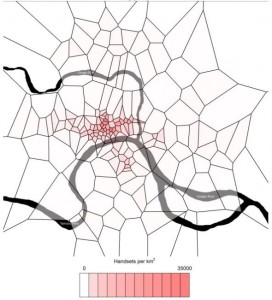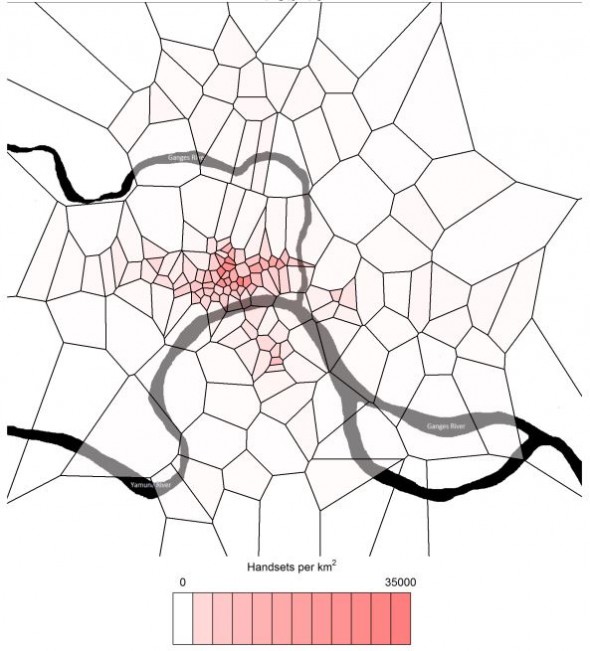
Mobile Phone Records Reveal Largest Gathering in the History of Humanity
Mobile Phone Records Reveal Largest Gathering in the History of Humanity
If everyone from Tokyo and New York–the world’s two largest cities–attended a single festival, it would still be smaller than an event that took place in India in 2013.
Mobile phones have revolutionised the way scientist study human behaviour, allowing them to watch people on a scale that has never been previously imagined.
This work has revealed patterns of sleep, mating strategies and commuting behaviours on huge scales. It has even allowed demographers to estimate the wealth of entire countries.
One thing that this work has revealed is that collective decision-making can be very different from the decisions that humans make individually. In particular, humans in groups have a strong affinity to pick out others who are like them. So minority groups tend to stick together.
This behaviour has been observed on relatively small scales but an interesting question is whether it also occurs on the largest scales as well.
Today, we find out thanks to the work of Ian Barnett at Harvard University in Cambridge and a few pals who have used mobile phone records to study group behaviour at a Hindu religious festival called the Kumbh Mela. This took place in India in 2013 and is well known to be a huge event.
 The Kumbh Mela took place in India in 2013.
The Kumbh Mela took place in India in 2013.
But exactly how big is hard to know. Barnett and co’s research provides an answer. These guys show that some 61 million people attended this event making it, by some margin, the largest gathering in the history of humanity.
The Kumbh Mela takes place every 12 years on the banks of the river Ganges in Allahabad where Hindus gather to bathe in the sacred river. The event lasts for two months, centred around several special days when attendance peaks.
The 2013 event was attended by many millions of people and widely regarded as the biggest ever. But its actual size is hard to estimate.
Barnett and co began their work by gathering mobile phone records from one operator for the duration of the event between 1 January to 31 March 2013. This dataset consists of almost 400 million communication events, including 146 million texts and 245 million calls.
For each event, the dataset gives the number of the initiating and receiving phones as well as the location of the cell towers involved (some 270 cell towers provided phone coverage for the event).
The team assumed the area code for each phone number determined the owner’s home location. They then crunched the dataset looking for calls between phones with the same area code. The researchers also worked out where these phones were located within the festival area to see whether people from the same area tended to cluster spatially.
The results make for interesting reading. The team found that people from the same area were significantly more likely to call each other and to be located in the same part of the festival space.
The effect was stronger among smaller groups. “Participants from low-representation states show considerably stronger propensity for both social and spatial homophily than those from high-representation states,” say Barnett and co.
And the tendency to stick together—the technical term is homophily–became stronger as the festival became busier. “These manifestations of homophily are amplified on crowded days, such as the peak day of the festival, which we estimate was attended by 25 million people,” they say.
That’s interesting work showing for the first time that the natural tendency for individuals to seek out others like themselves operates, not just on the level of hundreds or thousands of people, but on the scale of tens of millions. As Barnett and co put it: “Our findings confirm that homophily permeates all scales of human behaviour.”
To put the event in perspective, the world’s biggest music festival is held at Glastonbury in the UK and is attended by around 175,000 people. Last year, over 50,000 people attended the Burning Man festival in Nevada. Both of these are chicken feed compared to events such as the Olympics. Some 11 million tickets were sold for the London 2012 Olympics and Paralympics, which took place over the period of a month or so.
The world’s biggest city is Tokyo with 32 million people and the next biggest is New York 18 million. If everyone in both these cities upped sticks and headed to a festival, it would still be smaller than the Kumbh Mela.
The next one is in 2025. Let’s hope planning is already underway.
Ref: arxiv.org/abs/1605.06898 : Social and Spatial Clustering of People at Humanity’s Largest Gathering

Leave a Reply